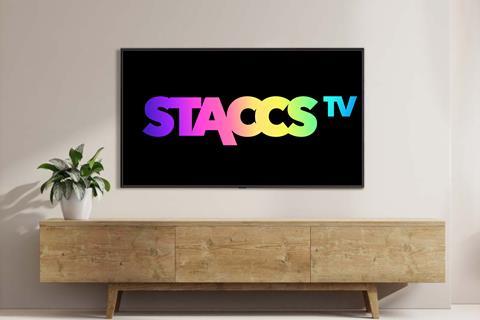To mark the launch of Staccs TV in the UK today, CEO Robert Kviby gives his advice on how to approach FAST

How has FAST TV changed over the past 12 months?
Well the most important change for us at STACCS is that the awareness about FAST has increased among viewers. People have realised that they have access to an array of great channels, for free and this, in turn, has led to a great increase in viewership since people discover that FAST really saves you time. You don’t have to spend time browsing to find something to watch, but FAST offers you a more laid-back experience, like the one you loved with traditional linear TV. This development will drive more interest from content owners to launch their FAST channels, and it becomes a positive flywheel.
What is driving the growth in FAST channels?
I touched on that a bit in the previous answer but let me elaborate further. There are a number of things that FAST brings to the viewer, no matter if you are a typical AVOD, SVOD or linear TV consumer. FAST saves you time and money, and brings you more great content than you had access to before. So, that is the growth on the viewer side. But then there’s also the growth driven by the platforms, such as Samsung TV Plus, Pluto-TV, TCL etc. From the perspective of Staccs it’s a no-brainer. YouTube has almost 50% of its viewing on the big screen and a huge ad business, and time spent on linear broadcast decreases year by year. That’s a situation where platforms can save time for one segment and add more relevant content to another. So, this creates a big incentive for the platforms to try to get into the action, right? And third, you have large content owners that see FAST as a very interesting way to create interest or increase monetization for their content. So, these three factors together drive the overall growth of FAST, as we see it.
What are the main barriers to further growth?
We think some technical barriers are rate limiters right now, so we are investing heavily in technology. Not just generative AI stuff, but automation and better architecture. Our view at Staccs is that the technical foundation of FAST gives us several opportunities that old-school broadcasts don’t have. For example, saving cost or workload on the channel side, or creating personalisation and engagement on the viewer side. All these things come on top of a technical stack that has things that are not a) available in the traditional broadcast setting (at least not affordable for 90% of the channels), and b) often not available today from the FAST platforms that usually have a legacy background from traditional playout/broadcast or VOD. So, we are creating those features ourselves and we decided early that we need to own our own stack, and that our success in FAST is built on 1) great content, 2) great packaging and 3) great tech. So, I think that companies that have not invested in their own stack will quickly run into growth rate limits that they have a hard time solving, and maybe that deters some from starting their first or next FAST channel.
What should you think of first when launching a FAST channel?
Well, you have to do the calculations as you would when starting any kind of channel. You need to have the unit economics in place and see that all the fixed and variable costs add up to a cost structure you can carry with a given revenue in a given market. You will see different sold out radios and CPMs for different markets, so it’s not an ’aggregated’ thing, you need to make the calculation in a granular level. This is of course common sense, but when I talk to people running or thinking about creating a FAST channel, I can tell that it’s sometimes not done at the level needed. The thing with FAST that we at Staccs love so much, is that we can come up with an idea for a channel in a hackathon, have it up and running in an hour, make it available to viewers in two hours and start collecting data in three. That allows us to test ideas quickly and then iterate. This is one of the key differences between a traditional TV channel where everything is done a long time in advance and the feedback loop is very slow. You need to use this.
What kinds of content work best for FAST?
I guess that the simple answer is great content :). Seriously, one of my GOAT-TV-bosses always said: “it’s never too late for a great service”, and I think that was right. As I stated above, if you have great content, and package it great, then you could also enhance that in FAST with great tech. If you want a less simple answer, my thinking is that there are a number of categories that drive reach, frequency and time spent, and the platforms, (such as Samsung TV Plus, Pluto-TV and TCL) need to ensure that they have two or three of these in place. It is not only about the content itself, but the packaging and the ideas for that will also require some tech. So, I would argue that news, music television, movies, kids and sports are key ingredients to master reach, frequency and time spent watching. I think that it will take some time before we see a wide offering of sports in FAST (that is, we need to have a premium FAST), but news channels, music channels, kids and movies will go a long way. There are obvious use cases for them which makes it easier, and less expensive, to get users in… So, if we have 4 pillars of FAST (excluding premium sports for now), I think news can drive a daily frequency, and kids as well. Movies have a great chance of capturing unplanned and laid-back viewing, and we know from our data that music can drive both reach and duration.

Robert Kviby is CEO of Staccs - Staccs TV is available to watch now exclusively on Samsung TV Plus







No comments yet